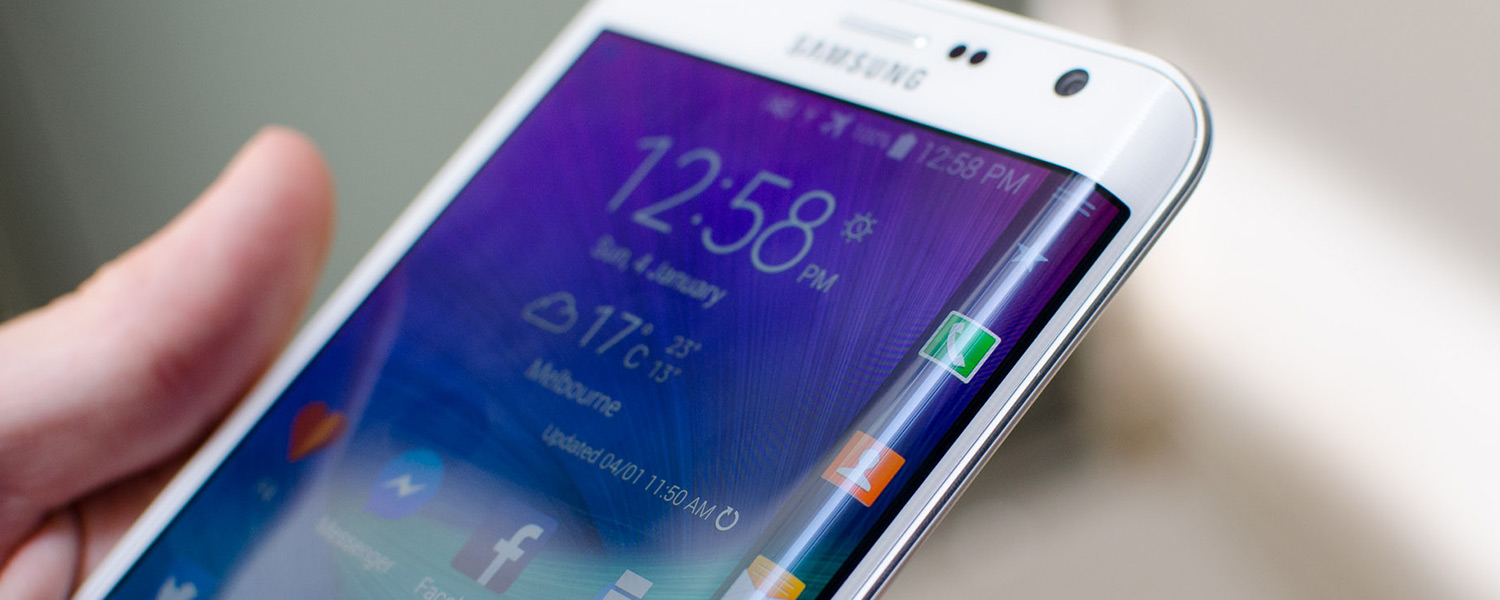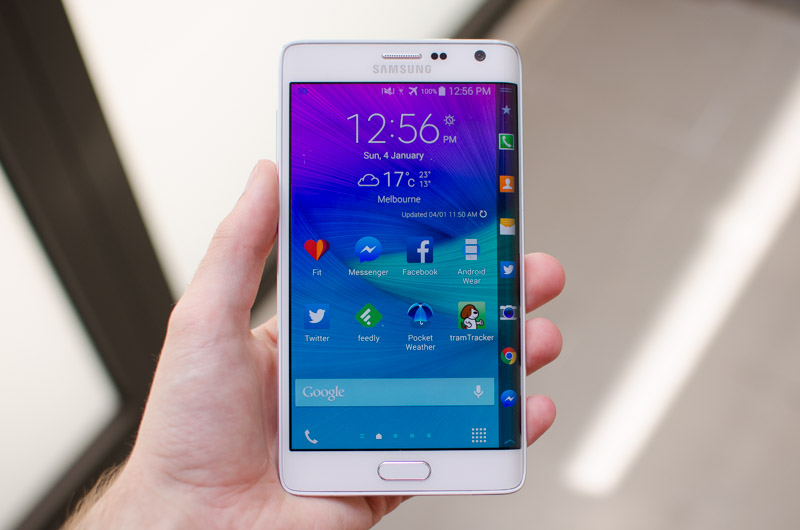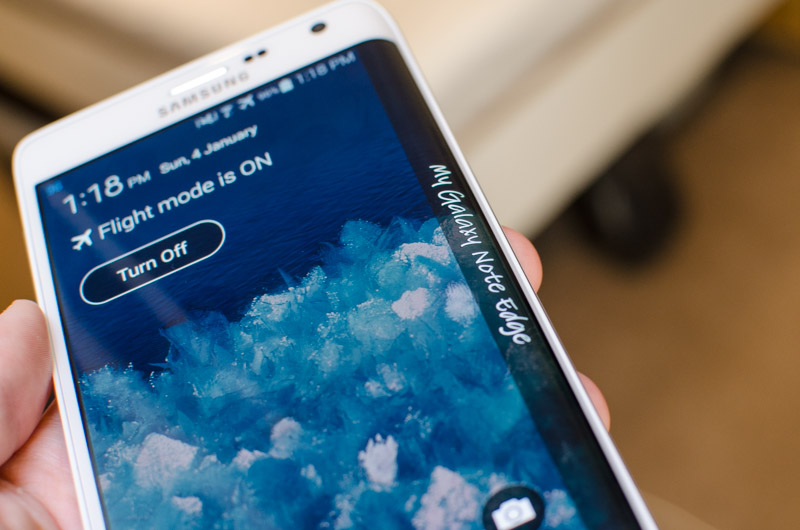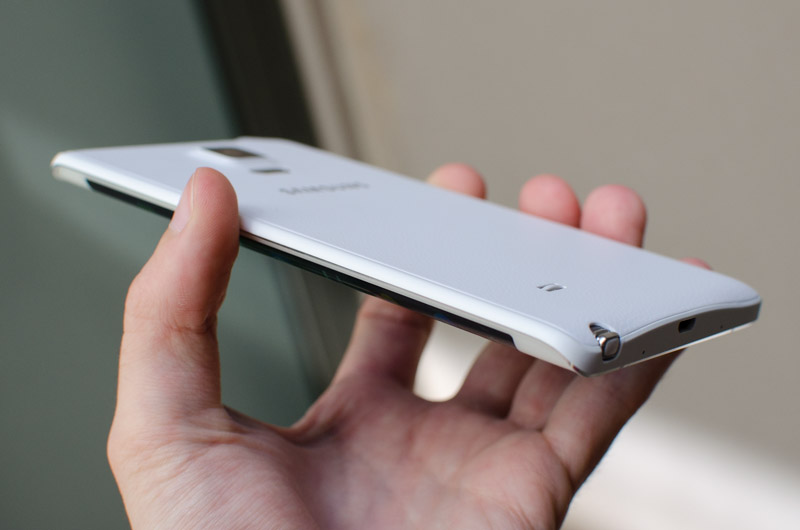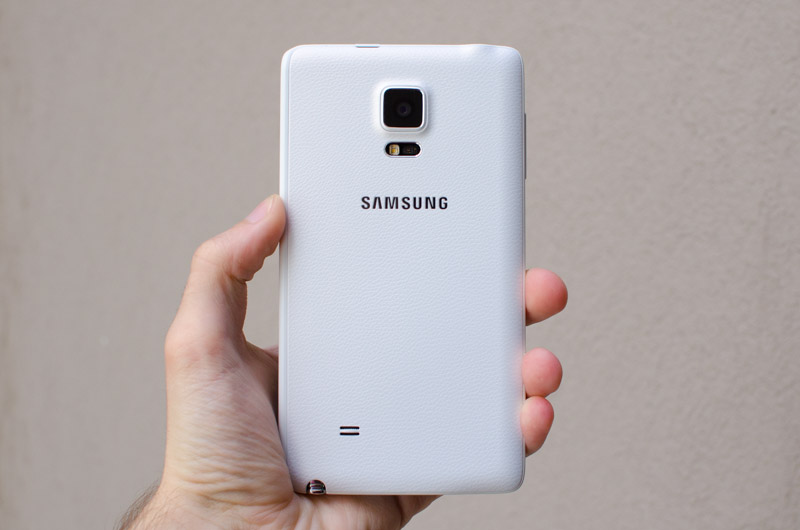Samsung isn't afraid to experiment with gimmicks. They love to include heart rate monitors on their smartphones and have web pages scroll with the movement of your eyes. They came out first with smartwatches that take SIM cards. And now, they've also added a curved AMOLED display on their flagship large-screened smartphone. They call this device the Galaxy Note Edge, and it's one of the more intriguing devices released in 2014.
The "Edge" refers to an extra, curved section of AMOLED 160 pixels wide that has been slapped on to the regular 2560x1440 Note 4 display. Occasionally it will do a few things, and you'll feel happy you spent an extra $200 on the feature. The rest of the time it just sits there; a blank panel that turns heads because it's so unusual. It's a true prototype device, but one that Samsung has also put on the market to tempt consumers.
Aside from the curve, you get a Galaxy Note 4. This means there's a Qualcomm Snapdragon 805 inside, 3 GB of RAM and 32 GB of storage. It also means there's a 16-megapixel camera with optical image stabilization, capable of 4K recording. There's also the S Pen, which can be used for note-taking and a range of other stuff, just like the identical pen on the Note 4.
But this isn't the Galaxy Note 4, a device which I thought was outstanding when I reviewed it a few months ago. In fact I often wish this were the Note 4 rather than the Note Edge, for one very simple reason: the Edge itself. Its inclusion completely changes the shape, feel and usability of the device, and not for the better.
The Note Edge is four millimeters wider than the Note 4 to accommodate the 16:10 aspect ratio display. This might not sound like a huge number, but the Note 4 was wide enough as it is, so adding in extra width decreases the usability of the handset, especially when you're trying to use it in one hand. The Edge is even wider than the Huawei Ascend Mate 7, which packs a significantly larger six-inch display.
It's not just the extra width that makes the Note Edge more awkward to hold, it's also down to the literal edge that Samsung has added to the right hand side. No, I'm not talking about the Edge display, but rather this annoying rim that sits below it as part of the device's body. The relatively sharp piece of metal (in comparison to the other side) makes the handset uncomfortable in the hand.
The display curving to the right also means that Samsung has had to remove all buttons from this side. The volume rocker has been relocated to the left, and the power button to the top. In an inexplicable decision, Samsung's engineers have placed the power button in a hard-to-reach location rather than in a sensible location (e.g. below the volume rocker).
The top power button was awkward enough on a device like the HTC One M8, but on the Note Edge it's even worse. This device is large enough that a power button has to be on one of the edges for easy access, and I can't think of a reason why the left edge fails to meet this criteria. Making matters worse, there is no tap-to-wake functionality for the display, though you have the physical home button, while for turning the display off the awkward top button will have to do.
Aside from the general awkwardness of the Note Edge's design, it takes many design cues from the Note 4. The edges are constructed from painted aluminium which gives the handset a premium feel, and even though it's not as stylish as the best smartphones on the market, the Edge still looks somewhat decent. The back panel is made from a faux-leather plastic, which is reasonably nice save for a touch of Samsung cheapness.
Like the Note 4, the back panel can be removed to reveal the micro-SIM slot, microSD card slot and the removable battery. In the Note Edge the battery is rated at 11.55 Wh, making it around 7% smaller than the 12.4 Wh cell in the Note 4.
Other Note 4 features that made it to the Note Edge include the S Pen found in its hole near the Edge screen, and the 16-megapixel camera centered on the back panel, above the range of fitness sensors and the LED flash. Further down the back panel is the main speaker for the Note Edge, which is relatively weak and of terrible quality (as you'd expect).
The front panel includes the beautifully-curved AMOLED display, which is protected by an equally-curved piece of Gorilla Glass. The result is a very swooshable display that feels like there is no end to it, at least on one side. It's not surprising to also see the home button coming with an integrated fingerprint scanner, which still isn't nearly as good as the iPhone's.
